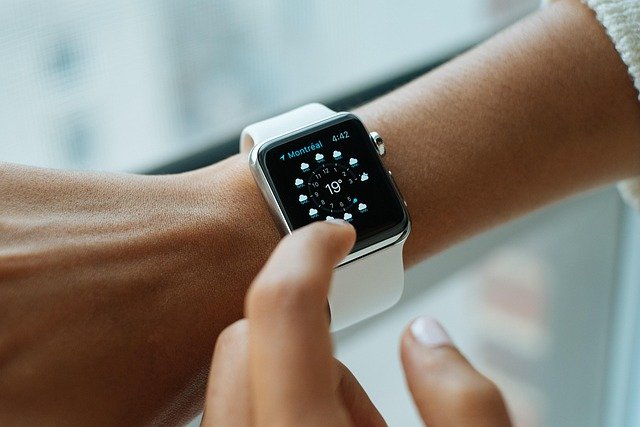Touch Tech Evolution: Haptic Feedback's Quiet Revolution in Computing
In a world where we increasingly interact with our devices through glass screens and virtual interfaces, the evolution of touch feedback has become a crucial yet often overlooked element of our tech experience. Haptic technology—the science of touch sensation in human-computer interaction—has undergone remarkable advancements in recent years, transforming how we connect with our digital worlds. This invisible technology has silently enhanced everything from smartphones to gaming controllers, creating more immersive and intuitive experiences without most users even realizing the sophisticated engineering behind those subtle vibrations and forces they feel.

The science behind the sensation
Haptic feedback technology operates on a deceptively simple premise: provide physical feedback to digital interactions. However, the execution involves complex systems that have evolved dramatically over the past decade. Early haptic systems relied on eccentric rotating mass (ERM) motors—essentially small weights attached to motors that create vibration when spinning. These crude mechanisms could only produce simple buzz patterns with limited control over intensity or pattern.
Modern haptic systems have graduated to linear resonant actuators (LRAs), piezoelectric actuators, and even advanced systems like Apple’s Taptic Engine. These technologies can create precisely controlled vibrations that mimic different textures, pressures, and sensations. The latest haptic engines can generate incredibly nuanced feedback—differentiating between a soft tap, a firm press, or the feeling of clicking a physical button where none exists.
The most sophisticated systems now incorporate multiple actuators working in harmony, allowing directional feedback that can guide your fingers across a screen or create the illusion of texture where there’s only glass. This technology requires precision engineering at microscopic levels, with actuators responding in milliseconds to user input.
Beyond the buzz: Haptic diversity
Today’s haptic landscape extends far beyond simple vibration alerts. The technology has diversified into specialized applications that enhance specific interactions across various devices. Smartphones now feature haptic systems that can simulate different keyboard textures, button clicks, and even subtle environmental feedback in games. Apple’s iPhone, for instance, uses haptic feedback to create the sensation of pressing a physical home button on models that eliminated the actual mechanical button.
In gaming, haptic feedback has reached new heights with controllers like Sony’s DualSense for PlayStation 5, which uses adaptive triggers that can resist player inputs to simulate tension—like drawing a bowstring or the increased pressure needed to depress a stiff gas pedal. The controller also features hundreds of sophisticated micro-actuators that create sensations ranging from raindrops falling on different surfaces to the recoil patterns of different firearms.
Wearable haptics represent another frontier, with companies developing gloves and bodysuits that can simulate touch sensations for virtual reality experiences. These devices use pneumatic systems, electrical muscle stimulation, or arrays of miniature actuators to create complex sensations across the user’s body, potentially transforming how we experience virtual worlds.
The invisible UI revolution
Perhaps the most significant impact of haptic technology has been its role in enabling what designers call “invisible UI”—interface elements that don’t need visual representation because they’re communicated through touch. This approach has allowed for cleaner, more minimalist device designs while maintaining or even improving functional feedback.
The touchpad on Apple’s MacBooks represents one of the most successful implementations of this philosophy. The solid-state trackpad contains no moving parts yet convincingly simulates the feeling of clicking through carefully calibrated haptic feedback. This design approach has influenced the industry broadly, with manufacturers increasingly replacing physical buttons with haptic alternatives that offer better durability, water resistance, and customizability.
Automotive interfaces have similarly benefited from haptic evolution. Modern vehicles increasingly feature touch-sensitive dashboards with haptic feedback that allows drivers to operate controls without looking away from the road. The feedback creates “virtual” buttons that can be felt rather than seen, improving both safety and user satisfaction. Mercedes-Benz’s MBUX system and Audi’s MMI Touch Response are leading examples of this approach, using sophisticated haptic systems to bridge the gap between touchscreen convenience and the tactile certainty of physical controls.
The hardware enabling the touch revolution
The miniaturization and sophistication of haptic actuators represent an engineering marvel that most consumers never see. Modern haptic engines pack remarkable technology into increasingly tiny spaces—the Taptic Engine in recent iPhones measures just a few millimeters thick yet delivers precise, localized feedback that can differentiate between dozens of sensation types.
The cost of implementing advanced haptic systems has decreased significantly, with basic LRA modules now available for under $2 in bulk quantities, though premium systems like those in flagship smartphones can add $15-20 to manufacturing costs. This price reduction has democratized haptic feedback, allowing it to appear in mid-range devices that would have been priced out of the technology just years ago.
Power efficiency has similarly improved, with modern haptic systems consuming up to 80% less energy than their predecessors from a decade ago. This efficiency gain has been critical for battery-powered devices, enabling richer feedback without significant battery life penalties.
The future touch landscape
The next generation of haptic technology promises even more sophisticated interactions. Ultrasonic haptics—systems that use focused sound waves to create touchable sensations in mid-air—are emerging from research labs into commercial applications. Companies like Ultraleap (formerly Ultrahaptics) have demonstrated systems that can create tactile sensations without any physical contact with the user, opening possibilities for touchless interfaces in public spaces or specialized environments.
Surface haptics represent another promising frontier, with technologies like TanvasTouch developing screens that can simulate textures ranging from rough sandpaper to smooth glass through electrostatic friction modulation. This technology could transform online shopping by allowing customers to “feel” fabrics before purchasing or enhance digital art by giving digital paintings physical texture.
As haptic technology continues its quiet evolution, the line between digital and physical interaction becomes increasingly blurred. What began as simple notification vibrations has evolved into a sophisticated sensory channel that profoundly shapes our relationship with technology—often without us even noticing the complexity behind those subtle taps and vibrations that have become integral to our digital lives.





